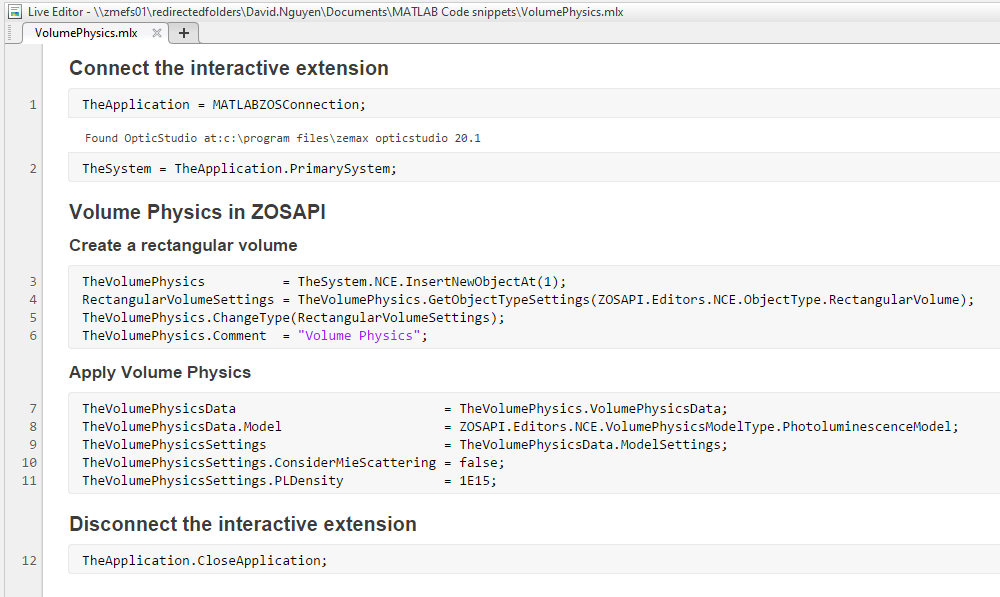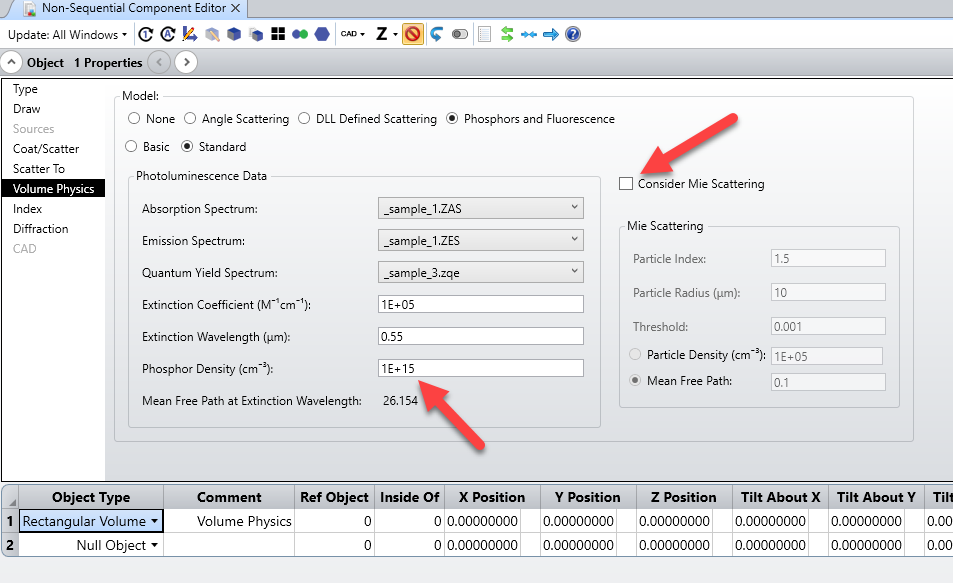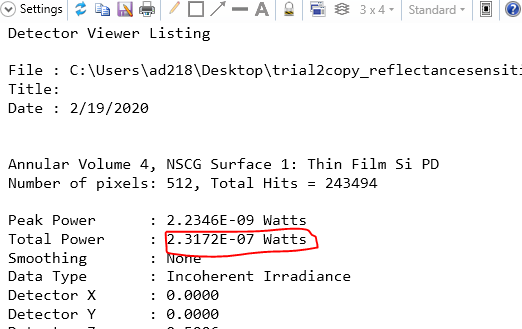Question
How do I vary the particle density in volume physics?
I am running fluorescence simulations on a liquid test sample, with a custom detector object. I am currently modelling fluorescence using Volume Physics Tab-> Phosphors and Fluorescence Radio Button -> Standard model (No Mie Scattering). I need to vary the particle density over a range, and save the power at the detector as a function of the particle density. How could I vary the particle density as well as uncheck mie scattering using a macro?
Also, is there a way to visualize the detector data for a custom object made to be a detector?
Thanks,
Aditi
Also, is there a way to visualize the detector data for a custom object made to be a detector?
Thanks,
Aditi
Enter your E-mail address. We'll send you an e-mail with instructions to reset your password.





